- Vintage Samsonite Luggage Guide - February 5, 2022
- Looking Back at the Wooton Desk: A Unique Collectible - December 27, 2021
- Antique Spotlight: The Hoosier Cabinet (Ultimate Kitchen Decor) - December 27, 2021
The charm of building a fire is undeniable. Whether you have a wood burning stove in your home, you love to sit by the fire on a cold winter night, or you enjoy roasting s’mores over a campfire or fire pit in the backyard, you need wood.
The comforting small of fresh wood filling your home is cozy and welcoming. There’s simply nothing else like it.
Read on to learn about collecting and chopping wood for home heating, with an overview of splitting mauls, hatchets, axes and our new favorite wood splitting device, the Kindling Cracker.
Why Use Wood to Heat Your Home
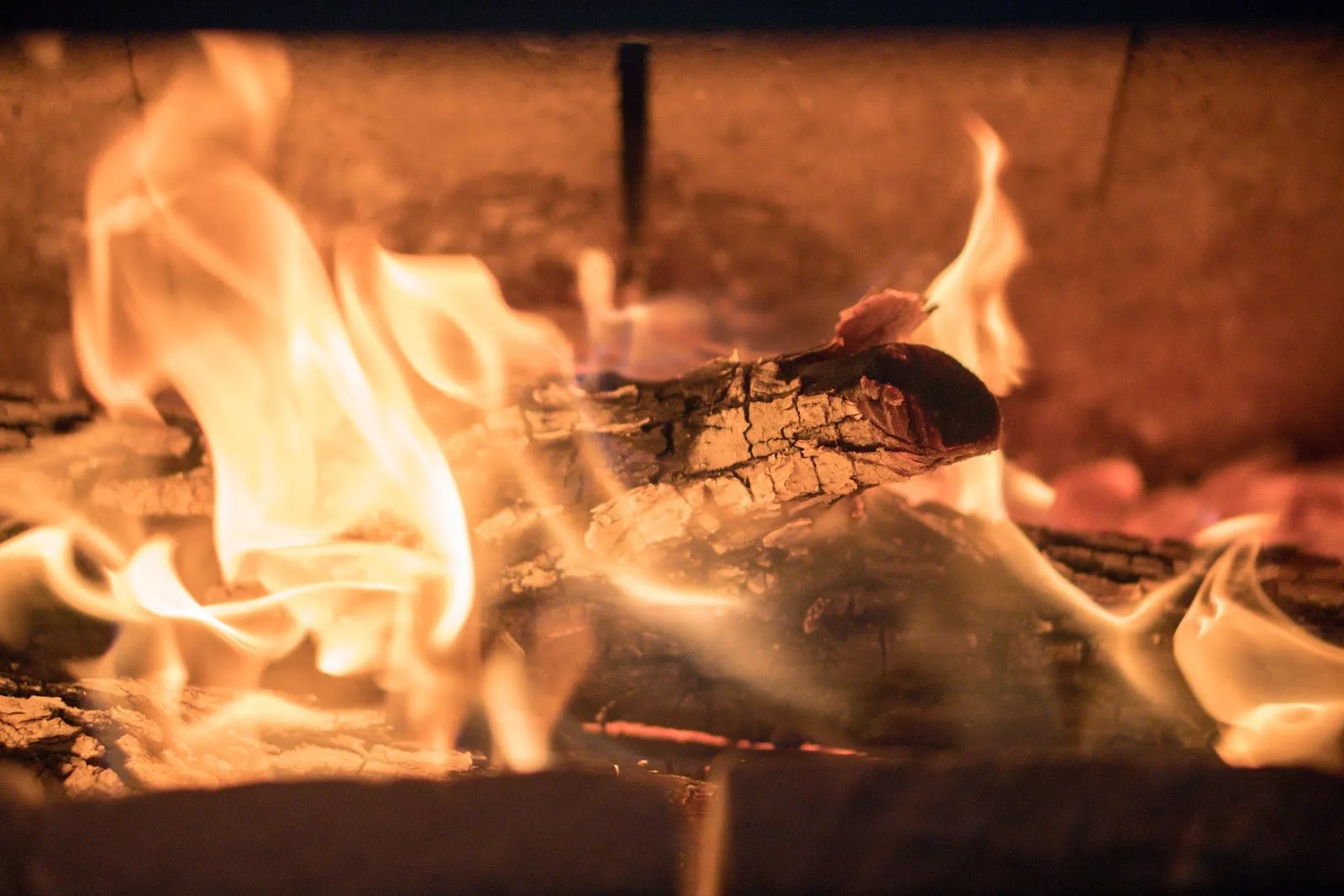
Using wood to heat your home seems antiquated, doesn’t it? Think again. It’s one of the most environmentally friendly ways you can fuel your heating system. It’s not the perfect fuel, but nothing is. Wood still has its merits.
Wood is accessible and affordable. It’s a renewable energy resource, as long as you’re using it safely and responsibly. It plays a part in reducing greenhouse emissions because the carbon dioxide it produces is much less than other types of fuel.
You’ll never be cold during a power outage again because it doesn’t rely on your electricity to work. It can also support the economies of small towns and rural communities who rely mostly on wood heating. If wood is cut and used locally, money stays in the community instead of leaving to pay for gas or oil.
Wood heating isn’t for everyone, but it’s a rustic lifestyle choice that feels right when you know it’s for you.
Safe and responsible wood burning
While wood isn’t the perfect fuel, there’s no such thing. Every type of energy has environmental impacts. Old wood heating is traditionally marked by black smoke curling out of chimneys.
However, advanced technology has enabled wood stoves, furnaces, and fireplaces to have low emissions, certified by the US Environmental Protection Agency (EPA). These appliances can burn with 90% less pollution and virtually no visible smoke.
While there are environmental implications of all fuel types, there’s a time and place for wood burning as well as gas and oil heating. Wood burning has a lot of advantages, but it’s not ideal for large cities or multi-family units.
It’s best used in rural areas and small towns because the population is lower and the cost of firewood is cheap. When wood heating happens on a smaller scale, the wood is harvested from local resources, giving users a better understanding of their total impact.
Traditional Collecting and Chopping
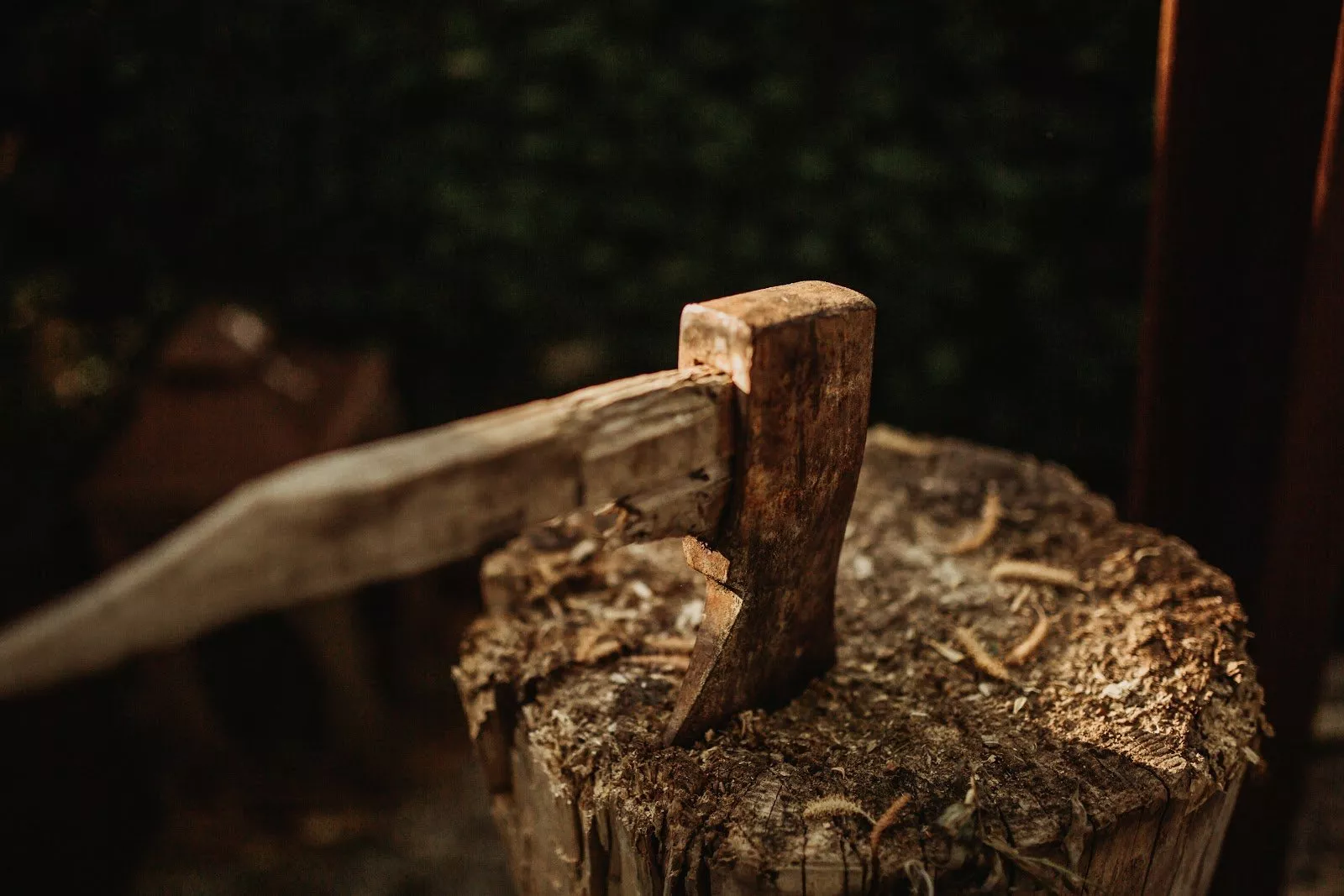
So now all you have to do is go chop down a tree and break your back for hours splitting your own wood, right?
Well, maybe.
Gathering
It’s best to cut down trees using a chainsaw. This is no easy task. You have to look at the positioning of the tree in relation to buildings, houses, power lines, and fences. You can’t fell a tree in any direction you choose.
Choose which direction to fell the tree where it won’t hit anything else. If it has a natural lean, you may want to fell it in that direction.
Clear away any small limbs close to the bottom of the trunk first. Make a top cut at about 60 degrees that cuts through roughly a quarter of the diameter of the trunk. Make this cut on the side of the trunk that matches the direction you want it to fall.
Then make a straight undercut that meets the top cut. On the opposite side of the trunk, make a horizontal cut a few inches above the undercut. Now you can use a felling wedge to make the tree fall. Stand clear as it begins to fall and watch surroundings carefully.
Splitting
Chopping wood with an axe or maul requires a chopping block, unsplit wood, and a tool like an axe or a maul. A maul has a wider head than an axe and is heavier. It works well on larger chunks of wood, but an axe works just fine for smaller pieces.
Use a maul if you’re splitting tough or knotty pieces that will prove more difficult. Remember that sharpness is typically not important. You’re not cutting wood, you’re splitting it.
Even if your axe isn’t sharp, consider boots, gloves, and eye protection. Avoid logs with nails in them. When split, the nail could fly in any direction unpredictably, risking damage to you, your axe, or your property.
Place your chopping block in a place where the vibrations from chopping won’t damage the surface. Chopping wood could eventually crack concrete or damage any underground pipes or lines.
Once you’ve found the perfect place to chop, place your wood upright on the chopping block. Stand where your axe or maul reaches the wood with your arms outstretched.
Stand with your legs apart, pull the axe back over your head, and swing it forward and down toward the wood. Make the weight of the axe work for you so you don’t have to use as much of your own strength.
Aim for any natural splits in the grain of the wood to make it easier. Sometimes you have to hit the wood more than once to split it, and you should aim for the same spot, but if you get close, it will eventually split.
It’s best to wait to split wet wood until it’s dry. Splitting green or knotty wood can prove to be quite difficult, but it is possible if you have to. Once you split your wood, stack it and expose it to air and sun.
Wood burns best after it’s been sitting for about a year, but it’s not necessary to cover it or keep it dry until a few weeks before you plan to burn it.
Types of axes and mauls
There are several different types of axes and mauls. Some are great for splitting wood and some aren’t.
Hatchet
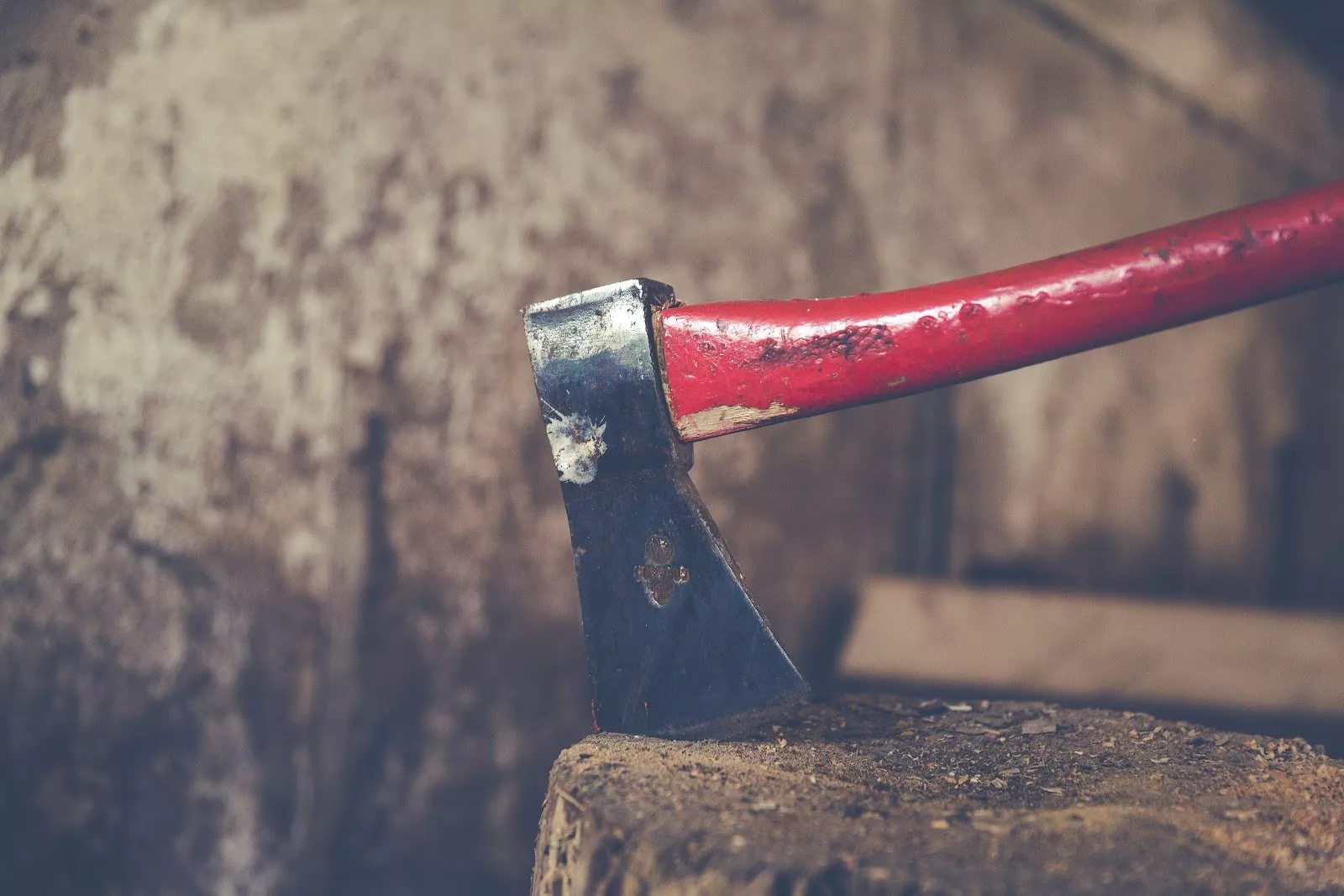
A hatchet is what most people picture when they think of an axe. You can pick them up relatively cheap at home improvement stores, and they work well for most people if you’re chopping kindling or cutting down a small tree.
They should have a hickory handle and a head that’s weighted well for accuracy. This gives it a balanced feel, making it much easier to use.
Felling hatchet
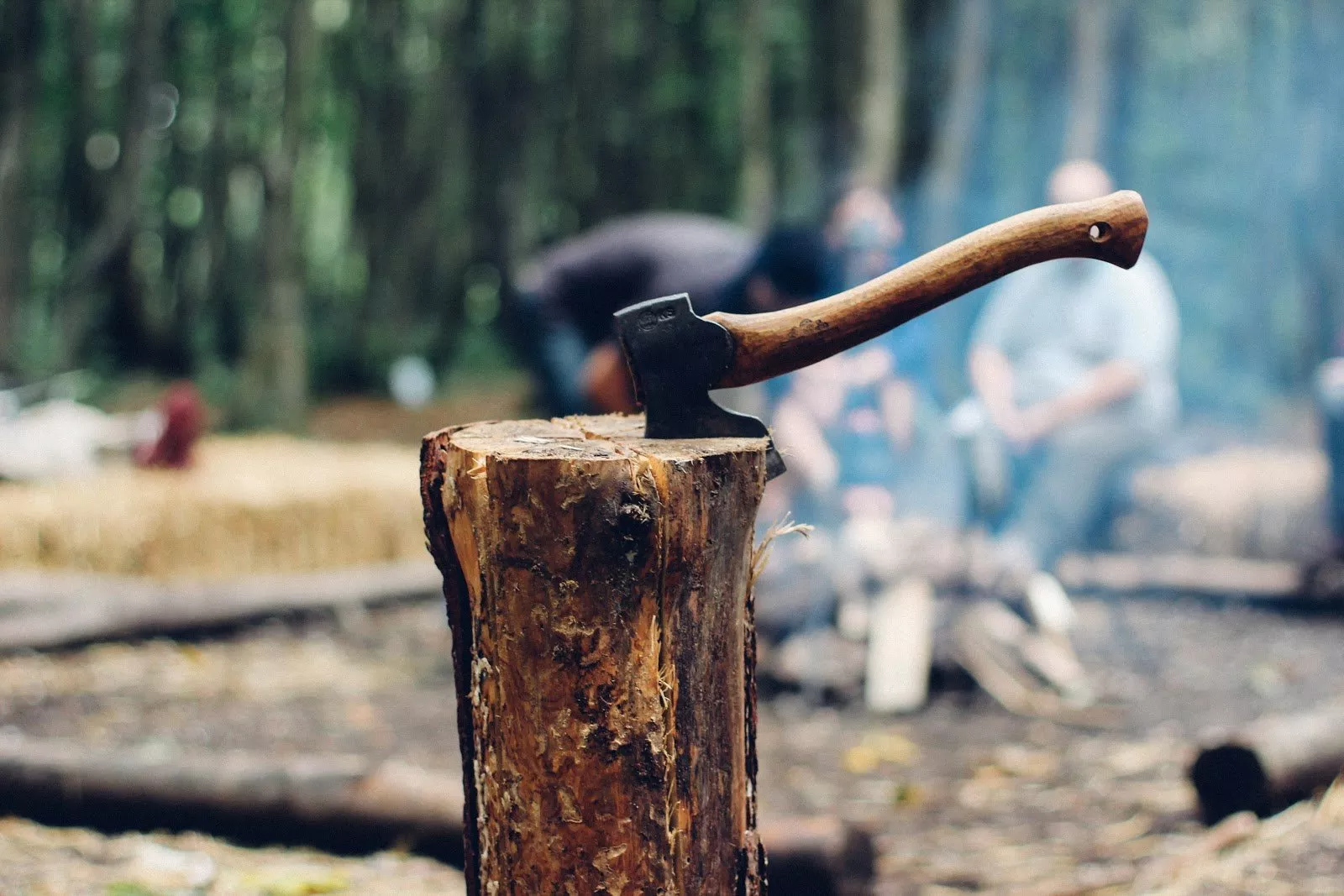
A felling hatchet has a longer handle and the head is angled more sharply. This produces a more powerful swing and a harder hit. The grain of the hickory handle should follow the curve of the handle for strength, but there are also metal handles or cheaper plastic ones.
Splitting maul
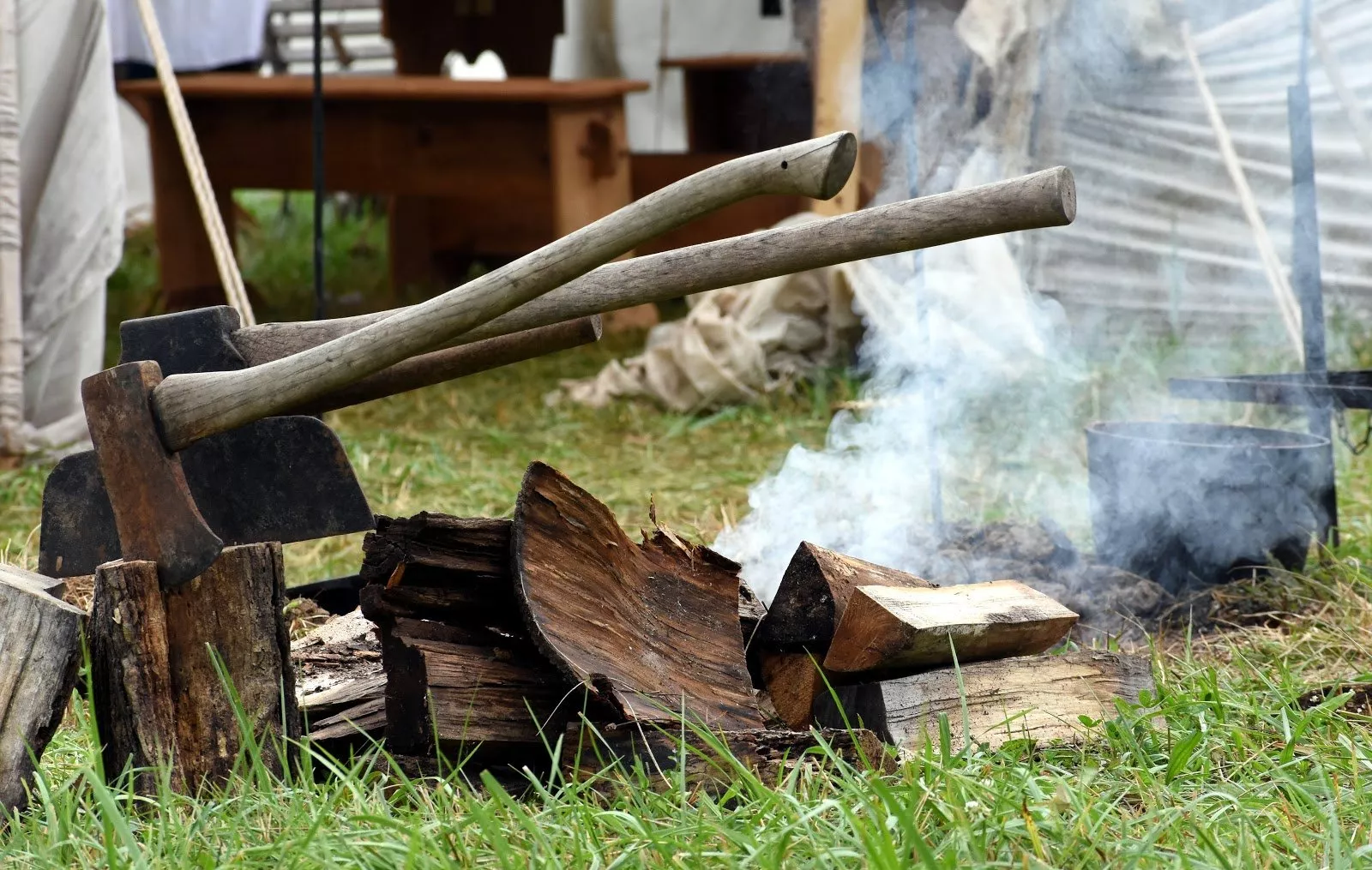
A splitting maul is roughly the same size as a felling hatchet, but it’s sole purpose is to split logs. The blade is concave so you can split wood across the grain without cutting into it. It will have the same type of long wooden handle as the felling axe. The only difference is the shape of the blade.
Tomahawk
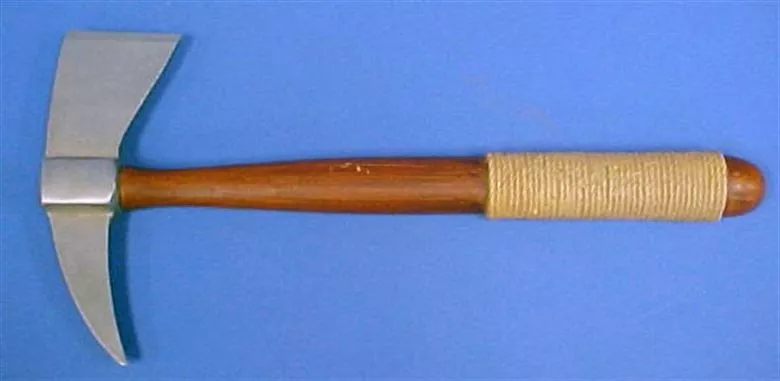
A tomahawk is not well suited for splitting wood. It’s better used as a self defense weapon on camping trips. You can also throw tomahawks with great accuracy if you practice enough, making them perfect for hunting.
Double bit axe
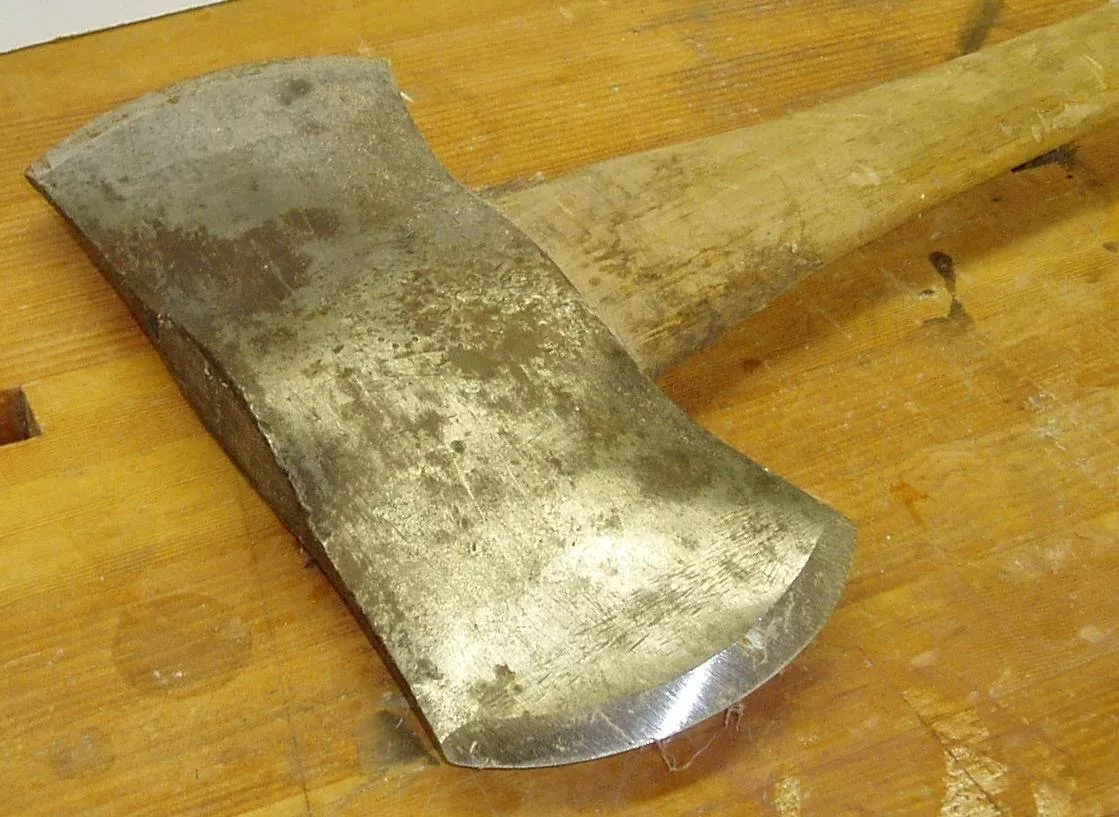
A double bit axe has a double-sided head. One side is sharper than the other so you can use it to fell a tree or chop wood. The dull side is used to split your logs for a fire.
These axes are very heavy, which you can learn to use to your advantage. However, it can make you tired faster. You might find this type of axe advantageous if you have to walk very far to find your wood because you only have to carry one tool instead of two.
Viking axe
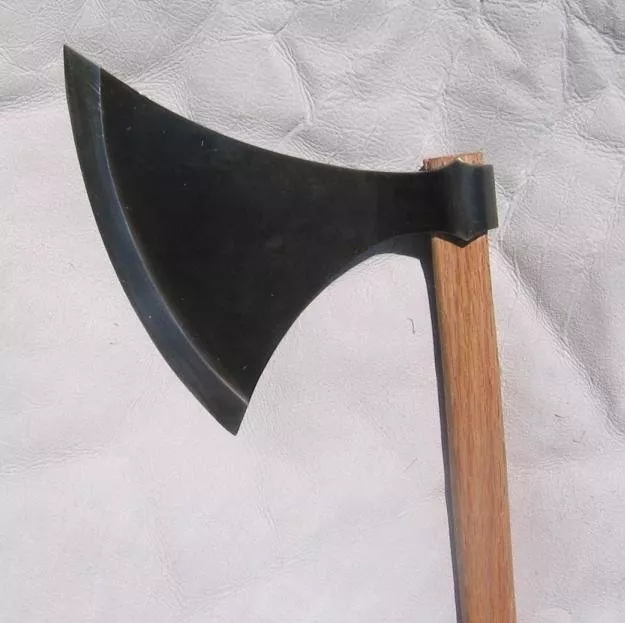
This one is the stuff of legend. There’s no practical use for these anymore, but they’re way cool! It’s not hard to get your hands on one because of the plethora of reenactments everywhere.
These types of axes are huge. They can easily meet or exceed six feet in height, but there are several different sizes.
Tactical axe
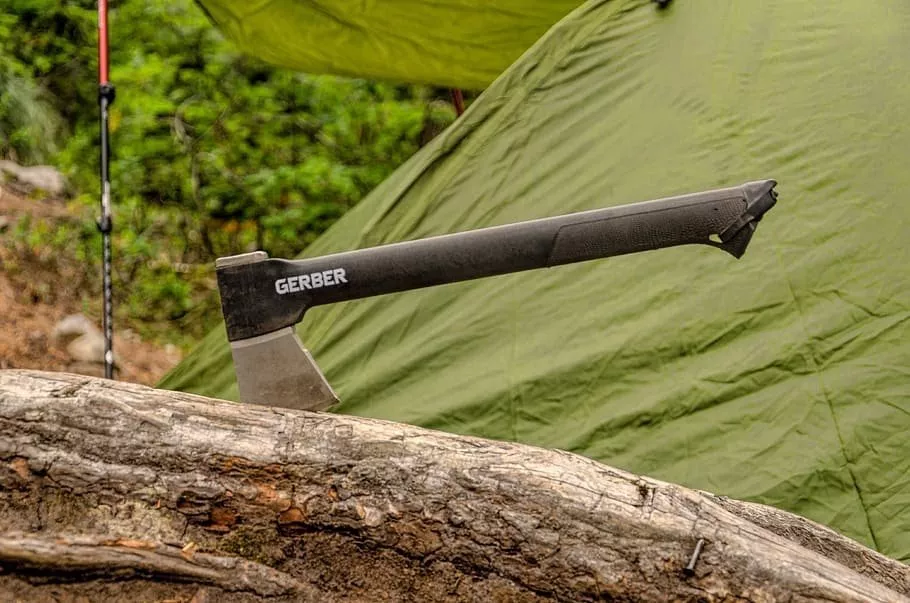
A tactical axe is like the Swiss Army Knife of axes. It has an axe blade, but it also has notches and serrated edges you can use to climb, hunt, carve, bludgeon, and much more. These are great survival tools to have with you in the woods.
Battle axe
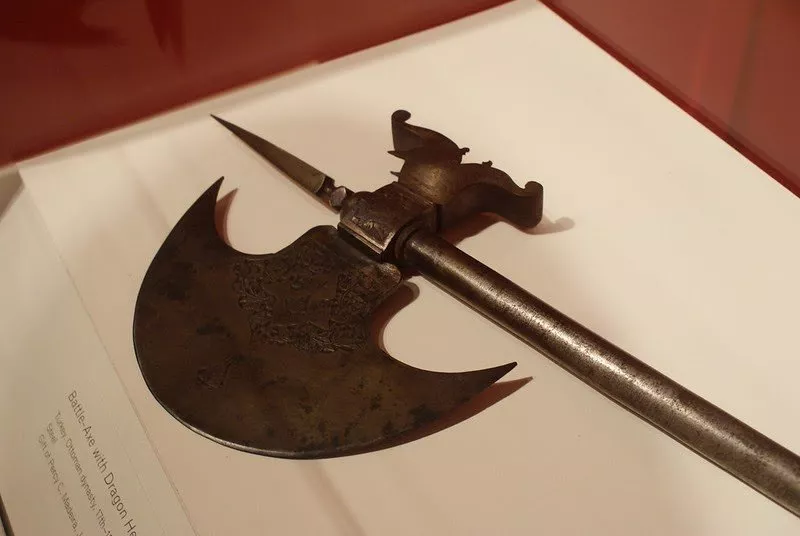
Unlike the Viking axe, this one is actually useful. It’s a powerful weapon, but it is a bit of a novelty item. They come in smaller sizes that are easy to carry with one hand, and you can find these pretty easily as well.
Safety concerns
Not only are there plenty of concerns surrounding the safe use of a wood burning fireplace, but there are a lot of precautions you should take when using axes as tools to cut down trees or split wood.
You need gloves to protect your hands from splinters and blisters. You also need boots to protect your toes from misplaced chops. Ouch.
In addition, there’s a very real possibility that as splinters fly, you could hurt your face, so eye protection is a personal choice, but one you should consider carefully.
Stray splinters or unexpected metal objects in the wood can damage your body and your axe if you’re not careful. It doesn’t feel good to chop into steel when you expect wood.
If you enjoy the task, there’s nothing wrong with splitting your own wood. If you’re not allergic to hard work, you may enjoy the physical exertion that comes from cutting down trees and splitting wood. There’s nothing wrong with that, but it’s not easy.
Thankfully, there’s a better way.
The Kindling Cracker
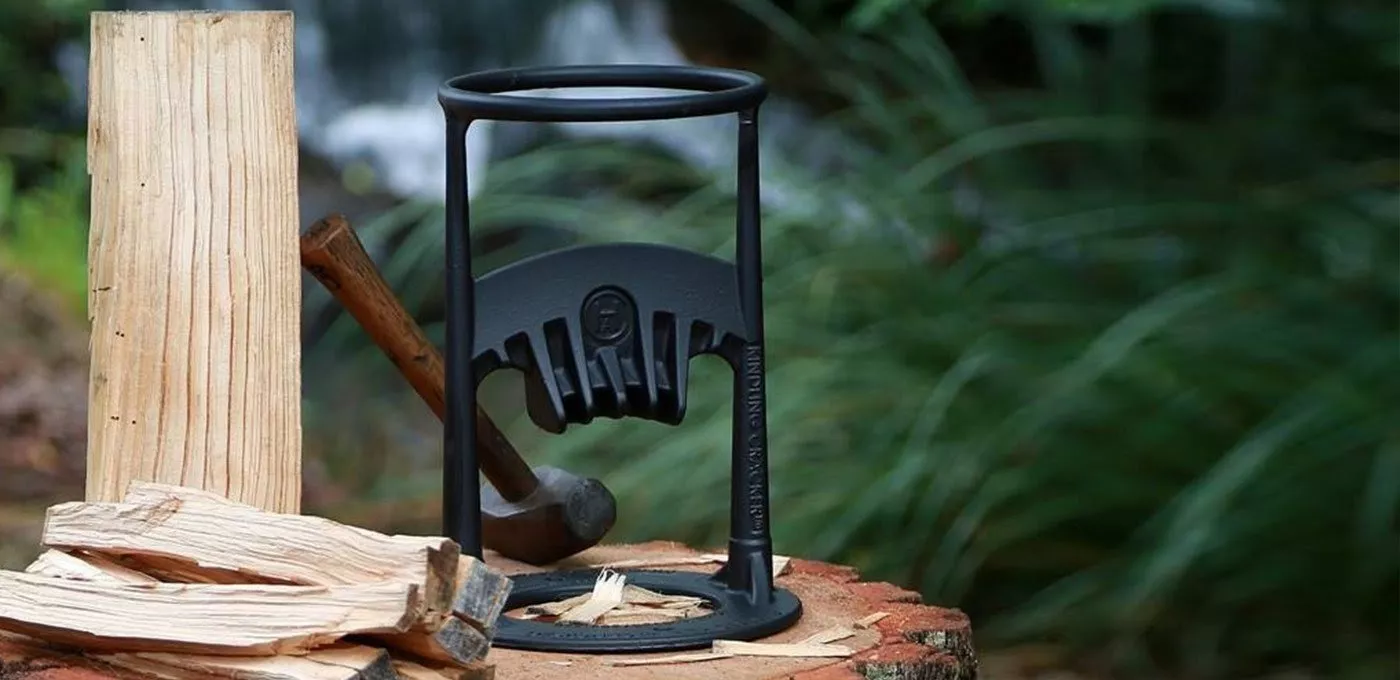
The Kindling Cracker® is a safe tool that makes it easier to split firewood into kindling. All you need is a hammer or another piece of wood. It has a ring at the top that holds your log in place above a metal wedge so you don’t have to balance it on a chopping block.
Place your log in the top of the Kindling Cracker and hit it with a hammer. This drives the log down on the metal wedge, splitting it safely and without a lot of effort.
It’s a solid piece of cast iron. It’s highly durable and will last a long time, making it the perfect accessory for any campfire. It’s safe and easy to use, so even amatuer wood burners can split the wood they need to build a fire.
How it’s made and why it’s better
The Kindling Cracker® was designed in New Zealand and built in Australia. It’s a clever tool that doesn’t require the use of an axe to split your wood. It’s one solid piece of high-quality cast iron, so you won’t have to worry about it falling apart or failing to last.
It’s durable and safe. With no need for an axe, you can ensure that you split all the wood you need without the physical exertion or dangerous blade. Whether you have a stack of wood in your backyard for the firepit or you run a wood burning stove in your house, you’ll always have all of the firewood you need.
If cared for properly, the Kindling Cracker will last for generations. It’s the perfect addition to your wood burning activities. It brings a bit of modern flair to your old timey activities.
It requires less force to split your wood than an axe, so it saves time and energy. You can mount it permanently to any service with the built-in bolt holes, or you can take it with you when you go camping.
Choose between two convenient sizes to suit your needs. Mount the large one permanently and take the small one with you wherever you go. The Kindling Cracker is 12 inches tall and the Kindling Cracker King is 17 inches tall with a 9-inch diameter for larger pieces of wood.
Both can be used inside or outside and are virtually maintenance free.
Where you can find it
The Kindling Cracker is available on the Kindling Cracker website and on Amazon. It’s surprisingly affordable, but you can typically find better deals on most things using Amazon.
However, using the Kindling Cracker website, you can also find hardware stores and other local businesses near you who may have them in stock for store pick up.
While splitting wood is something you may enjoy doing, it’s not always the easiest or the safest way.
There’s nothing wrong with doing things using traditional methods, and if you love the physical activity or the hard work, you should definitely give the old axe a try.
However, for people who can’t handle the weight of an axe, are scared to use one, or who simply want to split large quantities of wood much quicker, the Kindling Cracker is a easy, safe, and fun modern tool to get the job done.
In fact, while you may enjoy old timey methods of heating your home, you may not have a place to split your own wood. The Kindling Cracker gives you the freedom to do that, even indoors.
It’s the perfect solution for your backyard fire pit or wood burning fireplace, especially if you live in the city where it’s not always possible to source or split your own wood. Don’t think of it as a step forward into modernization. Think of it as a smart way to enjoy the benefits of days gone by when you wouldn’t otherwise be able to.
